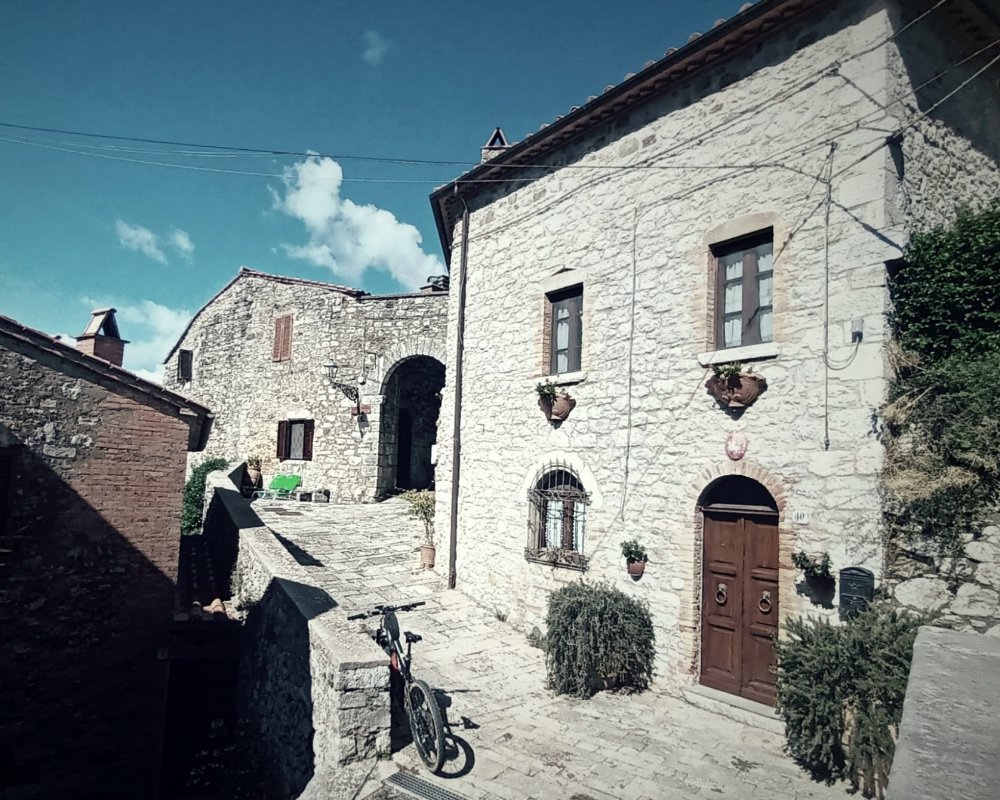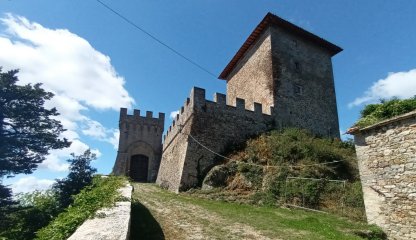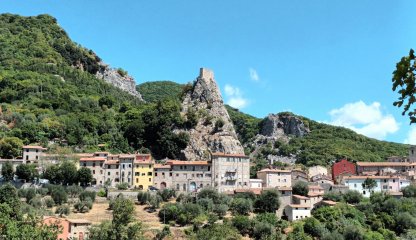Semproniano, villages and castles in the high valley of Albegna



The itinerary begins in Semproniano, an ancient fortified fief owned by the Aldobrandeschi family. Following the provincial road Follonata (Provincial Road 10) in the direction of Monte Amiata, we proceed until Marruchina locality. The crossroads drawn by the junction with Provincial Road 10 with the Cellena provincial road (Provincial Road 86) near the tiny center of scattered houses is the turning point for our itinerary. Ignoring the two provincial roads, we turn left entering a lonely, country dirt road following the Terra Madre Road, a title given by Slow Food to the circuit of farm roads winding through the rural villages of the Albegna Valley in the municipality of Semproniano.
Being once again on the tarmac of Provincial Road 10 after a short but steep climb near the hamlet of Petricci, continue following the provincial road, which now runs along the watershed ridge of the Albegna and Fiora rivers, to an important crossroads garrisoned by the imposing Triana Castle. From here, the landscape opens southward to Argentario and the islands of the Tuscan archipelago Giglio and Montecristo. Roccalbegna, a 13th-century medieval town famous for its fortress built on top of the imposing "sasso" overlooking the village, is the next stop in our itinerary. We reach it by riding immersed in a unique and fascinating landscape, where history and geology seem to compete to give us unique views.
A taste of the fine cheeses produced in the local dairies cannot absolutely be missed, together with the traditional salty cookie, now a Slow Food Presidium, also famous for the peculiar intertwining of the shape that resembles an embrace. We leave Roccalbegna from the ancient Porta di Maremma following the wide dirt path of the Rocconi, which descends among the ancient dwellings outside the walls. Keeping to the right at the next junction, we find Provincial Road 160 again near the hamlet of Santa Caterina. With a sometimes uneven surface and with some decidedly challenging climbs, if necessary we can avoid the Rocconi path by simply following Provincial Road 160 out of Roccalbegna.
From Santa Caterina we continue on a flat ground, then we begin a long downhill stretch. At Cancellone, we leave Provincial Road 160 following first the USI signs (Provincial Road 11) and then Rocchette di Fazio, entering a secondary road that descends into the Albegna gorges to reach the Bosco dei Rocconi Nature Reserve. Beyond the river begins a challenging uphill section that in about three kilometers takes us to Rocchette di Fazio. Perched on a spur of rock overhanging the Albegna gorges, among the narrow streets of the now perfectly restored village you can breathe an air that has a flavor of mystery. The village owes its name to Bonifacio Cacciaconti, known as Fazio, noble scion of the Aldobrandeschi family and lord of Rocchette. Impressive ruins remain of the 13th-century castle, but the most intriguing building is the ospedaletto that belonged to the order of the Knights Templar. Built outside the walls, it bears engravings on some elements that can be traced back to the Templars: the cross, the Agnus Dei and a bas-relief with the effigy of Baphomet on the facade. Another Templar building is the Pieve di Santa Cristina where the Templar cross placed above the portal is clearly visible. A legend has it that in the crypt of the Pieve, a knight with armor and his horse is buried and that his spirit stands guard over a treasure, buried somewhere in the village.
After Rocchette, the itinerary continues, slightly uphill, until it closes in at Semproniano.
A.F.